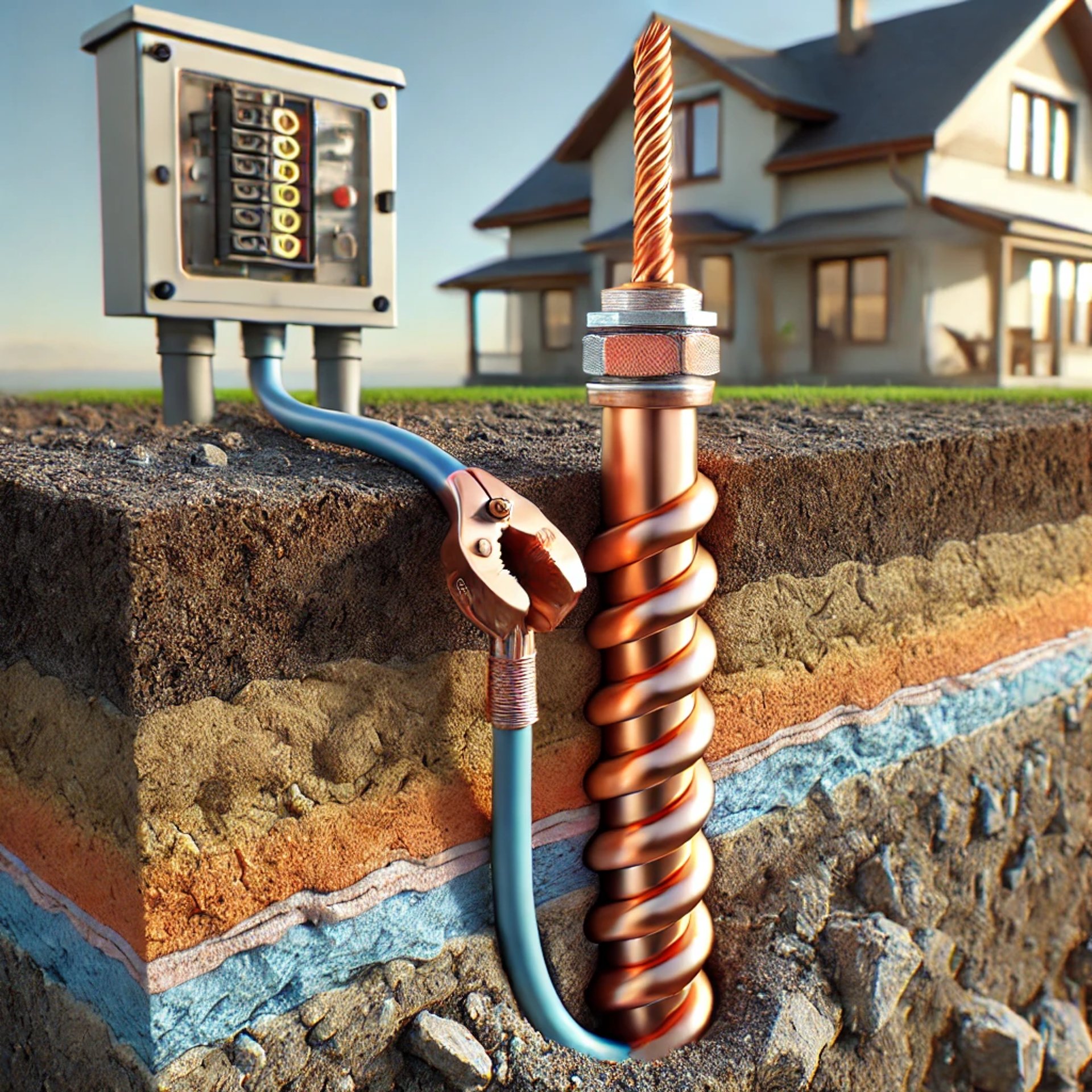
What is grounding rod for earthing?
A grounding rod (or earth rod) is a metal rod, usually made of copper or galvanized steel, that is driven into the ground to provide a safe path for electrical currents to dissipate into the earth. It is a crucial component of an electrical grounding system, protecting people and electrical equipment from electric shocks and surges, such as lightning strikes or faults in wiring.
ELECTRICAL
2/9/20251 min read


Key Functions of a Grounding Rod:
Electrical Safety: Prevents electrical shock hazards by directing stray electricity safely into the ground.
Lightning Protection: Helps dissipate lightning strikes safely, reducing the risk of fire or damage.
Equipment Protection: Protects electrical appliances and systems from power surges and faults.
Stable Electrical System: Helps maintain consistent voltage levels and prevents unwanted electrical interference.
Where Are Grounding Rods Used?
Residential and commercial buildings
Electrical substations and power grids
Solar panel and wind turbine systems
Telecommunications and data centers
Types of grounding:
TN-C-S (PME) System: Uses the supplier's neutral as earth—no separate rod required.
TT System: Requires a grounding rod, especially in rural areas.
TN-S System: Uses a separate earth cable from the supplier.
How to Check If You Have a Grounding Rod:
Look at your consumer unit (fuse box)—if it has an earth cable running to an external rod, your house has a grounding rod.
Check near the electric meter or main distribution board for an earth wire (bare copper or green/yellow) leading outside.
Go outside and look for a copper or steel rod sticking out of the ground near your meter, wall, or driveway.
Do You Need to Replace the Grounding Rod?
If you find a grounding rod, check these factors:
Corrosion: If it's rusty or heavily corroded, it needs replacing.
Loose connection: If the wire is not tightly clamped, it needs fixing.
Old setup: If your house has an older system (especially TT earthing with a short rod), upgrading to a deeper, newer rod improves safety.
If your house lacks a proper grounding system, installing a new rod is necessary.
Where to Install a Grounding Rod?
The rod is usually installed outside, close to the main electrical panel, often near the house foundation or by the driveway.
If you need a new one, it should be at least 1.8 meters (6 feet) deep in the ground.
Best locations: Moist soil areas (avoid dry sand or rock).
If installing indoors (rare in the UK), a grounding bar connects inside, with a wire leading outside to the rod.

